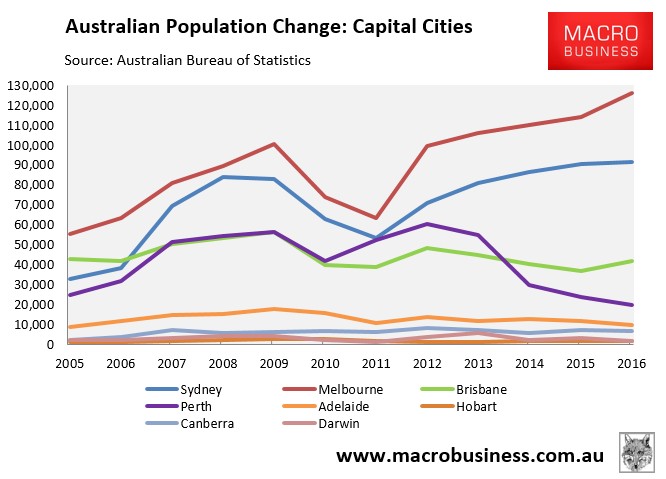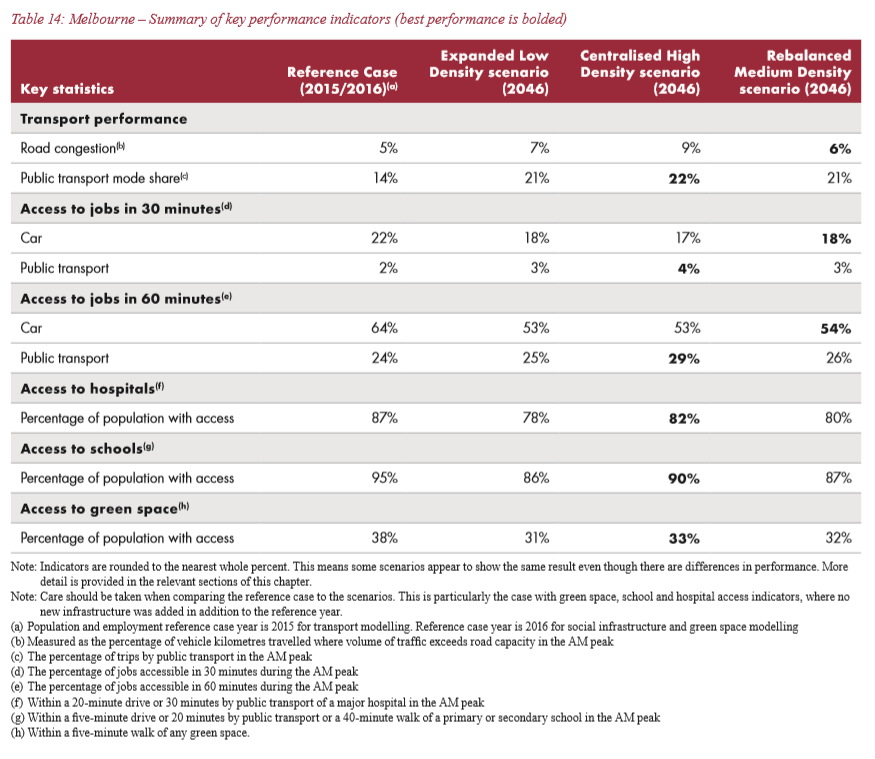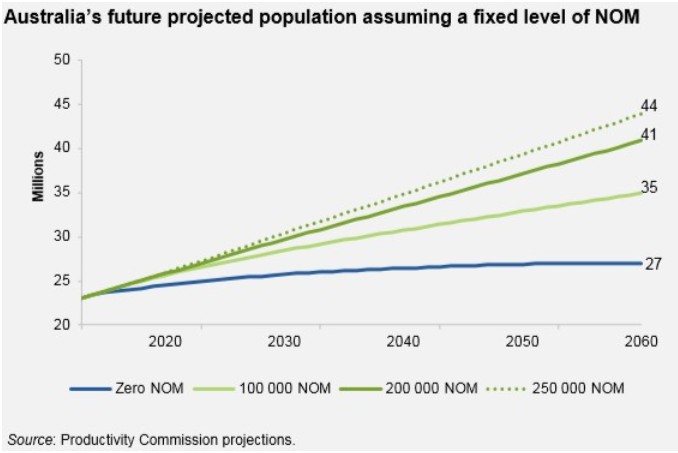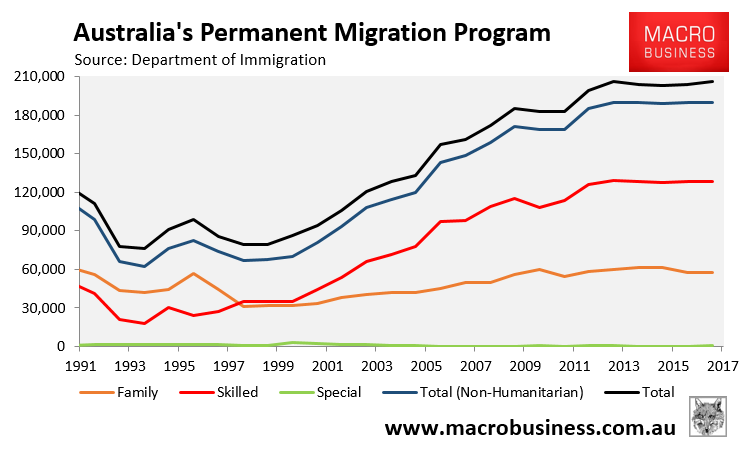After Melbourne’s population surged by an insane 556,000 in the five years to 2016, and by 1.1 million people over the past 12 years:

We learnt in October that the Victorian Government has been forced to remove seating from trains to accommodate surging passenger growth, and in December we learnt that Melbourne’s public transport services have failed miserably to keep up with the population influx:
Head of Monash’s public transport research group Professor Graham Currie said the data confirmed that the level of new services was not keeping up with population growth.
“At the moment we’re not improving service, we’re actually going backwards,” he said.
“When people say full trains and worry there are no buses, there’s every reason for that because we haven’t been keeping up with the growth.”
On Monday, official data was released showing that all Melbourne train lines are ever more delayed:
On the Metro Trains system, a huge increase in patronage has created significant overcrowding during peak periods and increased “dwell times” – the time taken for people to get on and off at stations.
Fresh government data shows that 14 of Melbourne’s 16 metropolitan train lines were less punctual in 2017 than they were in 2001.
Despite Victoria paying billions of dollars to private operators over the past two decades in a bid to improve reliability, an ageing train network plagued by signal and equipment faults is straining under the weight of demand.
There are 237 million people using the metropolitan network a year, up from 130 million people in 2000…
Melbourne University transport expert John Stone… said patronage growth has been predicted “for at least the past decade” and was not a sufficient excuse for declining performance…
In 2016, Victoria’s Auditor-General found that the condition of both train and tram infrastructure had deteriorated in the seven years leading up to the audit.
Of course, traffic delays on Melbourne’s road network are also becoming widespread, costing the economy nearly a billion dollars in lost productivity:
TRAFFIC delays are costing Melbourne’s economy up to $912.13 million a year, according to new analysis by a GPS navigation firm.
The report released by TomTom Telematics has put a price on the peak-hour congestion experienced by the city’s commuters.
Analysis of trip data found that traffic snarls in Melbourne has increased travel times by 33 per cent, a 4 per cent rise since 2016.
The delays meant motorists were spending an additional 34 minutes on the road, costing the city’s 383,617 commercial drivers $10.36 per day.
And the situation is set to worsen, according to Victoria’s infrastructure watchdog:
NEARLY one-fifth of Melbourne’s roads will slow down under heavy traffic by 2031, according to new research by Victoria’s infrastructure watchdog.
Infrastructure Victoria’s Managing Transport Demand report has forecast that 19.2 per cent of Greater Melbourne’s road network will be at high capacity in 14 years, up from the current level of 15.8 per cent.
According to the modelling, about 1070km of busy roads will be at 70 per cent capacity by the end of the next decade, the benchmark for when motorists will notice slower travel times and heavier congestion…
“We can see very clearly that roads will become busier in the future with an additional 3.5 million trips daily across the network,” he said…
Public transport patronage is expected to surge by 75 per cent but cars are still forecast to reign supreme in Melbourne, accounting for more than two-thirds of all trips in 2031.
Whereas Infrastructure Australia’s recent report also projected worsening congestion and access to jobs, schools, hospitals and green space as Melbourne’s population surges to 7.3 million by 2046:

Of course, anyone with half a brain knows what is driving Melbourne’s crush-loading and falling livability: the federal government’s mass immigration ‘Big Australia’ policy.
According to the Productivity Commission’s recent Migrant Intake into Australia report, Australia’s population is projected to grow to more than 40 million mid-century under current mass immigration settings. This is more than 14 million additional people versus zero net overseas migration:

Clearly, the best way to avert further crush-loading in Melbourne, as well as maintain decent living standards, is for the State Government to demand the federal government slash Australia’s mass immigration program, in turn relieving pressure on housing, infrastructure and services:

Sadly, all three major parties – the Coalition, Labor and the Fake Greens – are committed to maintaining Australia’s mass immigration ‘Big Australia’ policy, which means that Melbourne’s living standards are destined to be crush-loaded like sardines for the foreseeable future.
And for what?

